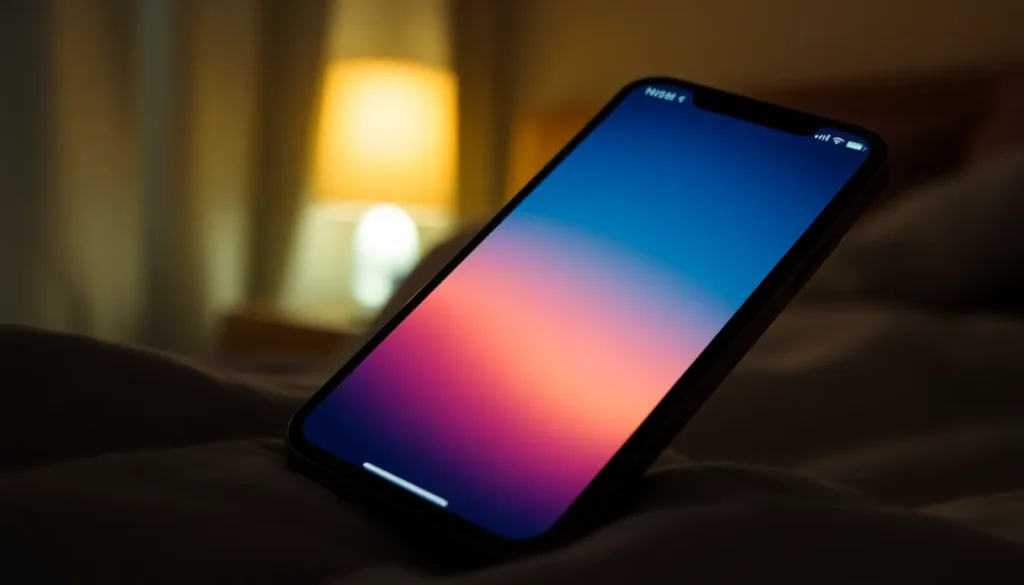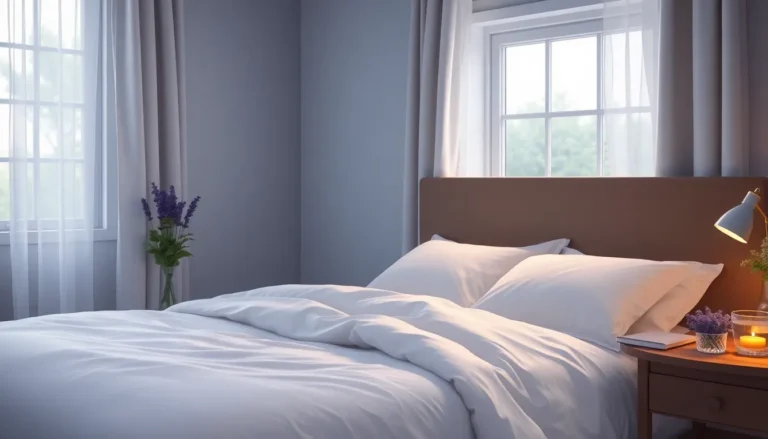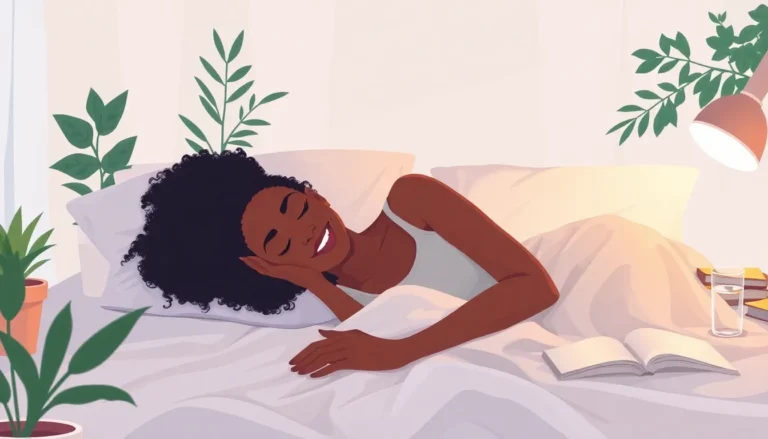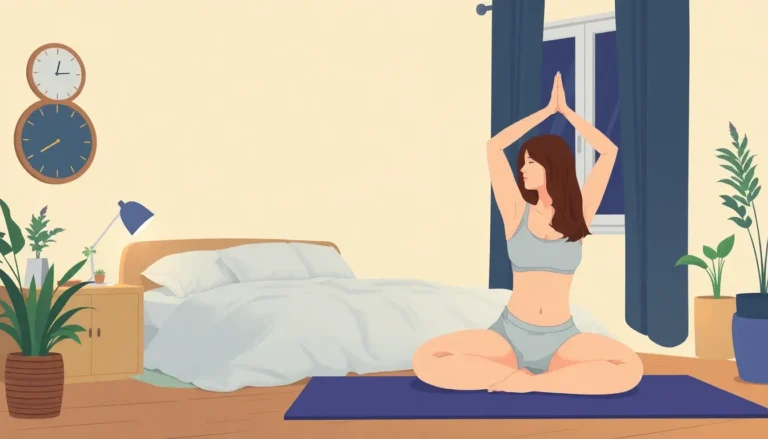Table of Contents
ToggleIn a world where screens dominate our lives, blue light is the unwelcome guest at the digital party. It sneaks into our iPhones, disrupting sleep and straining eyes like a bad comedian who just won’t quit. If you’ve ever found yourself staring at your phone late at night, wondering why you can’t drift off to dreamland, you’re not alone.
Fortunately, there’s a way to dim that pesky blue light and reclaim your peaceful evenings. With just a few simple adjustments, your iPhone can become a cozy haven for your eyes. Let’s dive into how to decrease blue light on your device and keep your vision—and sanity—intact. After all, who needs a headache when you could be enjoying a good night’s sleep?
Understanding Blue Light
Blue light, emitted from digital screens, can significantly impact visual comfort and overall health. Many users notice eye strain and sleep disruptions when using devices late at night.
The Effects of Blue Light on Eye Health
Extended exposure to blue light can lead to digital eye strain, characterized by discomfort, dryness, and blurred vision. Research indicates that over 50% of individuals report symptoms from prolonged screen time. Additionally, blue light exposure has potential long-term effects, including increased risk of macular degeneration. Morning sunlight helps regulate circadian rhythms; however, excessive evening blue light can disrupt these patterns. Complaints related to prolonged screen use include headaches, fatigue, and difficulty focusing.
Importance of Reducing Blue Light Exposure
Mitigating blue light exposure contributes to enhanced sleep quality and reduced eye strain. Studies highlight that minimizing blue light before bedtime encourages better melatonin production, improving sleep patterns. Prioritizing solutions for decreasing blue light can foster a more comfortable visual environment. Incorporating features like Night Shift on iPhones can significantly alter screen colors during evening hours. Reducing screen glare paired with limiting usage before sleep supports overall well-being. Simple adjustments yield noteworthy benefits for both eye health and sleep quality.
Features on iPhone to Decrease Blue Light
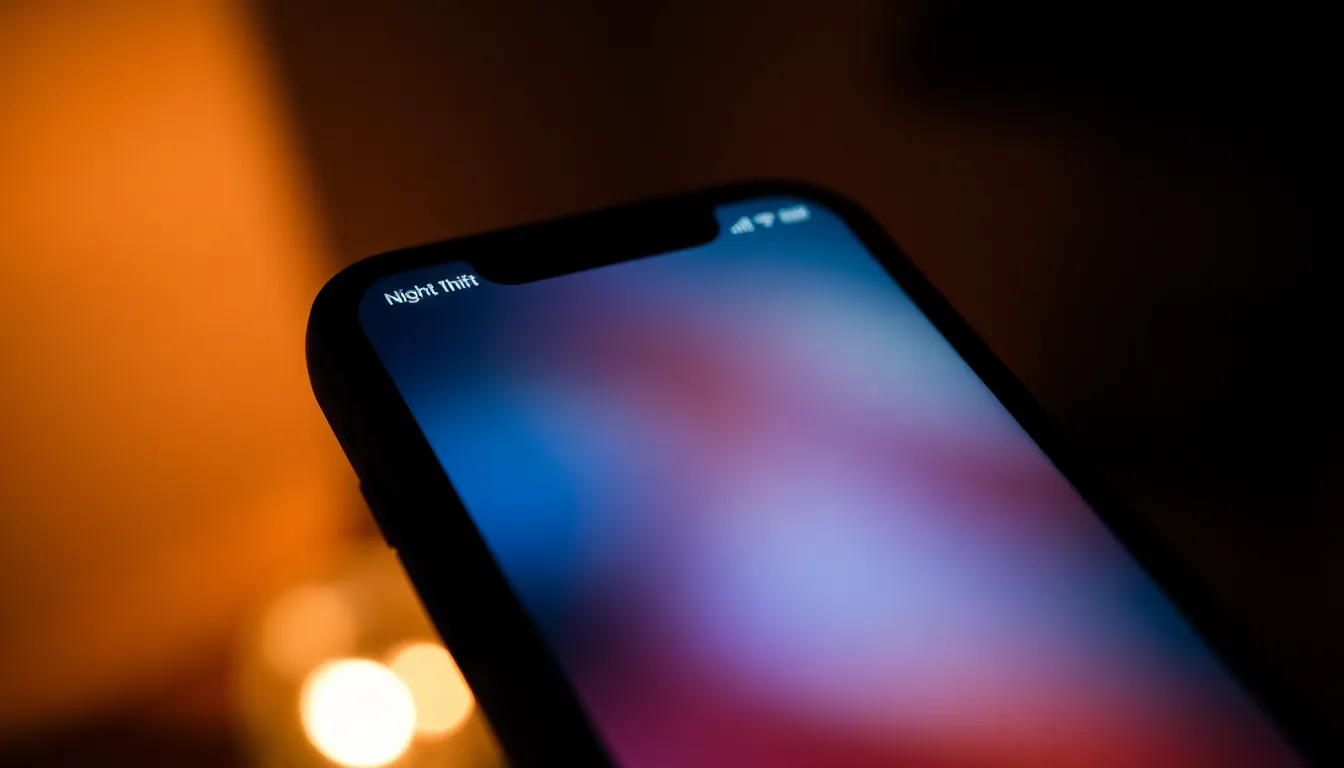
Several features on the iPhone help decrease blue light exposure, promoting better eye comfort and sleep. Utilizing these settings can significantly enhance the viewing experience, especially during evening hours.
Night Shift Setting
Night Shift adjusts the color temperature of the display. This feature shifts colors to warmer tones during the evening, reducing blue light exposure. Users can schedule Night Shift to activate automatically, aligning with sunset times. Accessing this feature involves navigating to Settings, selecting Display & Brightness, and then tapping Night Shift. Specifically, it offers options for manual or scheduled activation.
True Tone Display
True Tone automatically adjusts the white balance. It matches the display’s colors to ambient lighting, ensuring a more natural viewing experience. This adjustment helps reduce eye strain, especially in dim lighting conditions. For activation, users can go to Settings, select Display & Brightness, then enable True Tone. Enhanced comfort becomes noticeable, particularly when shifting between indoor and outdoor environments.
Dark Mode
Dark Mode changes the overall appearance of the iPhone interface. It replaces bright backgrounds with darker tones, reducing glare and blue light emission. This feature is beneficial for low-light environments, promoting a more comfortable experience during nighttime use. Activating Dark Mode occurs through Settings by selecting Display & Brightness and switching the Appearance option. Users find this setting particularly helpful for reading or browsing at night.
Third-Party Apps for Blue Light Reduction
Third-party apps can help reduce blue light exposure on iPhones. These applications provide additional features to further enhance eye comfort during screen time.
Popular Blue Light Filter Apps
F.lux stands out for its wide range of customizable settings. Twilight is another favored option, offering a seamless interface that automatically adjusts screen temperature based on sunset times. Iris offers unique features, including adaptive brightness control and health monitoring. Eye Care is also well-regarded, providing a simple way to reduce glare and filter blue light efficiently. These options cater to various user preferences and needs.
Features to Look For in Apps
Customization options allow users to set schedules for blue light filtering. A user-friendly interface enhances the overall experience, making adjustments easy. Compatibility with different iOS versions ensures wider application accessibility. Real-time adjustments based on ambient light create a more comfortable view, promoting eye health. User reviews offer valuable insights about the app’s effectiveness, helping individuals select the right tool for their needs.
Tips for Reducing Blue Light in Daily Use
Reducing blue light exposure enhances eye comfort and sleep quality. Several practical methods exist to integrate these reductions into daily routines.
Setting Time Limits on Screens
Establishing time limits on screen usage fosters better visual health. Setting a specific duration for device use can prevent excessive exposure to blue light. Experts recommend following the 20-20-20 rule: every 20 minutes, shift focus to an object 20 feet away for 20 seconds. This practice minimizes eye strain and encourages eye rest. Using tools like screen time trackers aids in monitoring device use effectively. Limiting screen time near bedtime is essential for promoting melatonin production. Effective management leads to healthier screen habits.
Incorporating Breaks for Your Eyes
Incorporating regular breaks for the eyes reduces the strain from prolonged screen exposure. Taking short breaks every hour allows the eyes to relax and refocus. Utilize the Pomodoro technique, working for 25 minutes followed by a 5-minute break, to maintain focus while resting the eyes. Engaging in activities such as stretching or stepping outdoors can provide necessary refreshment for the eyes. Creating reminders to pause during intense screen sessions encourages adherence to this practice. Eye health significantly improves with frequent breaks.
Reducing blue light exposure on iPhones is crucial for enhancing sleep quality and minimizing eye strain. By utilizing built-in features like Night Shift, True Tone, and Dark Mode, users can create a more comfortable viewing experience. Additionally, third-party apps provide further customization to meet individual needs.
Implementing practical strategies such as the 20-20-20 rule and taking regular breaks can significantly improve visual health. With these tools and techniques, users can effectively manage their screen time and promote better overall well-being. Adopting these practices ensures a healthier relationship with technology, paving the way for improved sleep and eye comfort.

